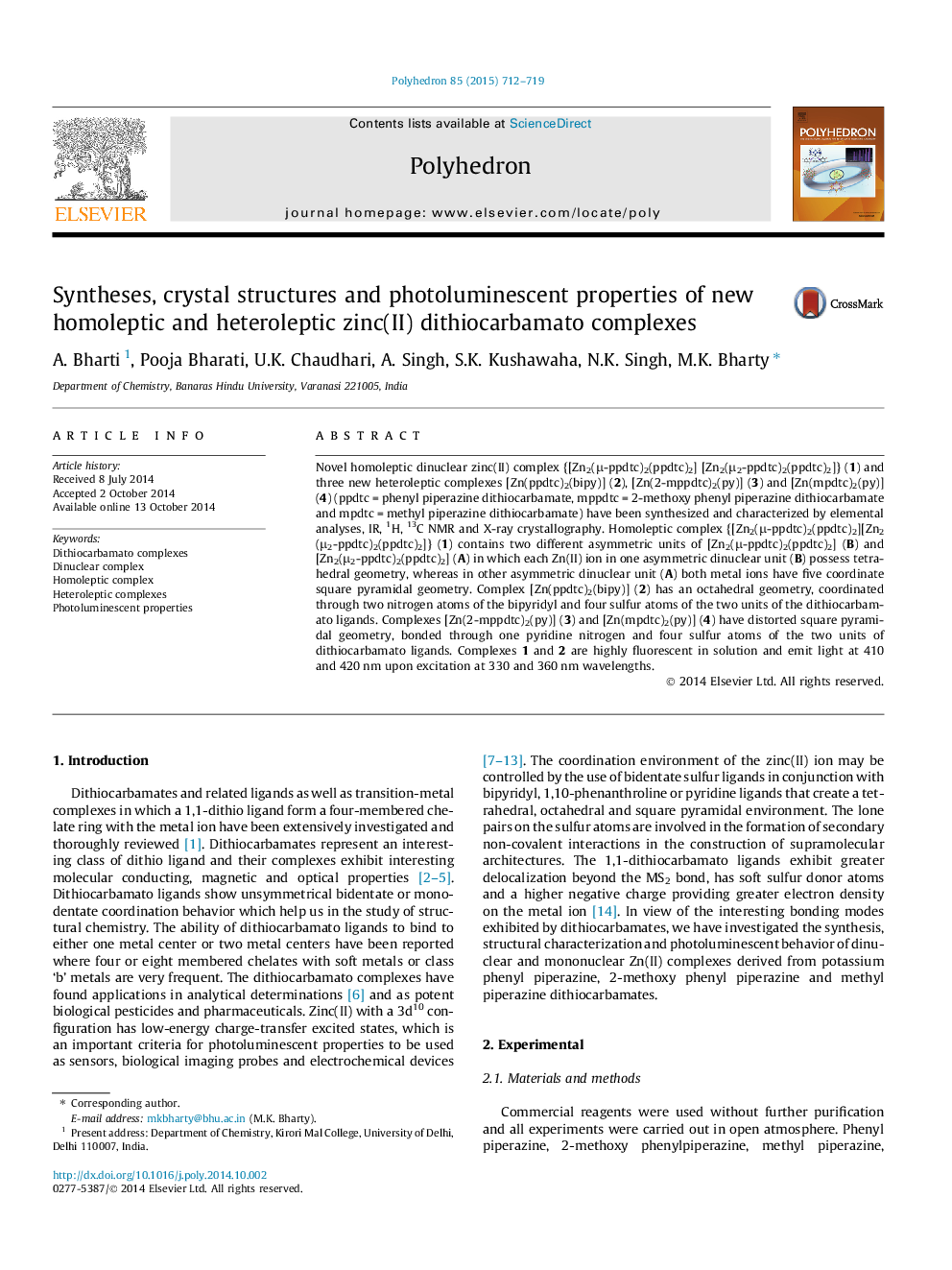| Article ID | Journal | Published Year | Pages | File Type |
|---|---|---|---|---|
| 7766145 | Polyhedron | 2015 | 8 Pages |
Abstract
Novel homoleptic dinuclear zinc(II) complex {[Zn2(μ-ppdtc)2(ppdtc)2] [Zn2(μ2-ppdtc)2(ppdtc)2]} (1) and three new heteroleptic complexes [Zn(ppdtc)2(bipy)] (2), [Zn(2-mppdtc)2(py)] (3) and [Zn(mpdtc)2(py)] (4) (ppdtc = phenyl piperazine dithiocarbamate, mppdtc = 2-methoxy phenyl piperazine dithiocarbamate and mpdtc = methyl piperazine dithiocarbamate) have been synthesized and characterized by various physicochemical techniques. Homoleptic complex {[Zn2(μ-ppdtc)2(ppdtc)2][Zn2(μ2-ppdtc)2(ppdtc)2]} (1) contains two different asymmetric units of [Zn2(μ-ppdtc)2(ppdtc)2] (B) and [Zn2(μ2-ppdtc)2(ppdtc)2] (A) in which each Zn(II) ion in one asymmetric dinuclear unit (B) possess tetrahedral geometry, whereas in other asymmetric dinuclear unit (A) both metal ions have five coordinate square pyramidal geometry. Complex [Zn(ppdtc)2(bipy)] (2) has an octahedral geometry, coordinated through two nitrogen atoms of the bipyridyl and four sulfur atoms of the two units of the dithiocarbamato ligands. Complexes 1 and 2 are highly fluorescent in solution and emit light at 410 and 420 nm upon excitation at 330 and 360 nm wavelengths.
Keywords
Related Topics
Physical Sciences and Engineering
Chemistry
Inorganic Chemistry
Authors
A. Bharti, Pooja Bharati, U.K. Chaudhari, A. Singh, S.K. Kushawaha, N.K. Singh, M.K. Bharty,
